#digitalcommunities
Text
WEEK 6: Does "sustainable fashion" really exist?
According to Domingos et al (2022), a fashion label is perceived as "slow/sustainable" when it follows the principles relating to quality-based production, ethical attitudes, and well-made and long-lasting products. However, an ideal story in which both the economic and ethical concerns are prioritized is relatively rare to happen in the fashion industry. Even Uniqlo, a top global brand that is known for its timeless designs, is still not categorized as a slow-fashion company but instead a "sustainable fast-fashion brand" because of its mass production. (Danziger, 2021) So the question is, in which way sustainability is demonstrated in the current fashion landscape?

Firstly, we must look straightforward into the reality that thanks to media in general and social media in particular, slow fashion nowadays has become a movement that every brand is following to make themselves more ethical and favorable in the consumers' eyes. Browsing on H&M, Zara, or Uniqlo's websites, it is observed that they have exclusive sections where they clarify their efforts in maintaining sustainability, with identical terms such as "net-zero impact", "reducing the footprints", "environmental-friendly materials"... However, it seems like their practical outcomes do not align with the missions they set for themselves, based on annual reports and news indicating the great amount of solid waste and CO2 emissions from their factories, how they exploit their labor resources, and how fast can they catch up with the trends and produce collections constantly. (Shedlock and Feldstein, 2023)
Since the "slow" factor still needs a very long time to be clearly visible through the manufacturing process, it is suggested that we should shift the attention to the customers' - our mindsets when purchasing and consuming clothes. You can buy a $4 T-shirt from SHEIN but wear it for 4 years, that is when you practice sustainable fashion, focusing on the clothes' lifespan and number of usages, even though your piece comes from an unsustainable brand.
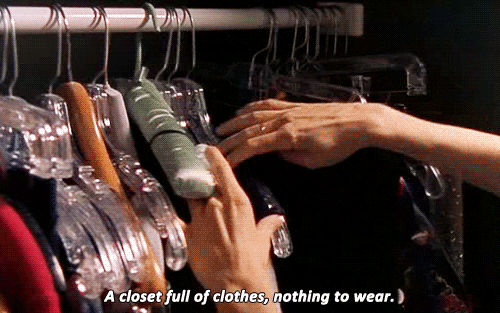
In 2023, the fashion industry witnessed the rise of "capsule wardrobe" and "quiet luxury". Although these trends did encounter certain unknowledgeable followers, they contributed significantly to educating consumers to prioritize clothes' quality in materials, forms, and seams over logos or trendiness; and to only buy the "hero" pieces that can match well together. On Instagram and TikTok, some popular fashionistas like Tim Dessaint and Daniel Simmons have succeeded in inspiring their communities to repeat outfits, proving that simplicity and efficiency should be the new trend.
REFERENCES
Danziger, P. N. (2021). Uniqlo Intends To Become The World’s Top Fashion Retailer By Distancing From H&M And Zara. Forbes. https://www.forbes.com/sites/pamdanziger/2021/02/17/uniqlo-intends-to-become-the-worlds-top-fashion-retailer-by-distancing-from-hm-and-zara/?sh=70d9bb076d9a
Domingos, M., Vale, V. T., & Faria, S. (2022). Slow Fashion Consumer Behavior: A Literature Review. Sustainability (Basel, Switzerland), 14(5), 2860-. https://doi.org/10.3390/su14052860
Shedlock, K., & Feldstein, S. (2023). UNRAVELLING THE HARMS OF THE FAST FASHION INDUSTRY AT WHAT COST? Center for Biological Diversity. https://www.biologicaldiversity.org/programs/population_and_sustainability/pdfs/Unravelling-Harms-of-Fast-Fashion-Full-Report-2023-02.pdf
4 notes
·
View notes
Text
Crowdsourcing
Crowdsourcing is the process of using social media, the internet, and smartphone apps to gather work, information, or views from a huge number of individuals (Pratt & Gonsalves, 2023).
Crowdsourcing is predicated on the assumption that a heterogeneous and dispersed group might produce novel concepts, insightful observations, and solutions that might not be achievable through conventional channels. Through the utilization of crowdsourcing, both individuals and organizations can access an extensive range of resources, expertise, and viewpoints.
3 Examples of Crowdsourcing Campaigns in Malaysia
Tabung Harapan Malaysia (Malaysia Hope Fund)
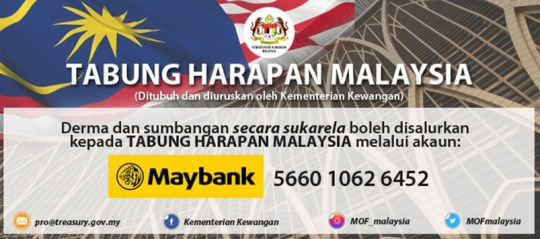
The Malaysian government started the Tabung Harapan Malaysia (Malaysia Hope Fund) campaign in 2018 to solicit public donations in an effort to lower the nation's debt. Support for the campaign was tremendous, with money coming in from Malaysians all around the nation and even outside (Chan, 2018).
Projek57
youtube
Source: https://youtu.be/UabNP7QaaU4?si=N0JExhlzK2PB92IA
Malaysia's Projek57 is a social business with the mission of fostering nationalism and unity. They started a crowdsourcing initiative to collect designs, ideas, and narratives in order to produce a product that is exclusively Malaysian. People responded quite well to the campaign, sharing their experiences and submitting their drawings, which were turned into a variety of items (Projek, 2023).
Citizen Engagement
The government of Malaysia has aggressively started a number of initiatives to crowdsource ideas and solutions from its citizens. Numerous regional organizations have taken the lead and started crowdsourcing projects (Zahari, 2016).
How is crowdsourcing used by communities during disasters?
Gathering information: Information on the disaster, including its location and extent of damage, the number of people impacted, and the resources required to respond to it, can be gathered through crowdsourcing (Crowdsourcing - PrepareCenter, 2023).
Mapping: Maps of the disaster region made via crowdsourcing can be used to assist responders in planning their actions and identifying places that require assistance (Tavra et al., 2021).
Resource allocation: Resources like food, water, and medical supplies can be found and distributed to the communities that need them the most using crowdsourcing (Crowdsourcing - PrepareCenter, 2023).
Volunteer coordination: Organizing volunteers who wish to assist with the disaster response effort can be done using crowdsourcing. Volunteers can be paired with projects based on their availability and skill set (Crowdsourcing Toolkit for Emergency Management - Integrating Crowdsourcing, n.d.).
Situational awareness: Real-time updates on the catastrophe situation, such as the whereabouts of emergency responders, the condition of vital infrastructure, and the requirements of impacted communities, can be obtained through crowdsourcing (Crowdsourcing - PrepareCenter, 2023).
Can crowdfunding build a community for creatives?
YES, crowdsourcing may help creatives form communities. Independent artists and small groups can use crowdfunding, a popular new internet fundraising method, to reach a much wider audience. In addition to being a helpful tool for marketing, crowdfunding websites like Kickstarter, IndieGogo, and GoFundMe may be used to earn money for artistic endeavors (Crowdfunding Arts Projects, 2017). For artists, crowdfunding may be a useful and somewhat easy method of directly raising funds and building a more intimate relationship with their fans (WomenArts, n.d.).
Here are some examples of how crowdsourcing may foster a creative community:
Engaging with supporters
Through crowdfunding, artists may interact more personally with their followers. Contributors, no matter how tiny, feel invested in the project and are more inclined to tell their own networks about it (WomenArts, n.d.).
Building an audience
Creatives can use crowdfunding to expand their audience for their work. A successful campaign can inspire interest in the undertaking and draw in new followers and backers (Crowdfunding for Artists, n.d.).
Networking
Creatives can network with other artists and organizations in their sector by using crowdfunding. With the social networking tools included into many crowdfunding platforms, creatives may interact with other users and share their work (Berman, n.d.).
Feedback
Crowdfunding can give artists insightful criticism of their work. On the campaign website, supporters can provide feedback and recommendations, which can assist artists in refining their work and strengthening the community surrounding their initiatives (Crowdfunding for Artists, n.d.).
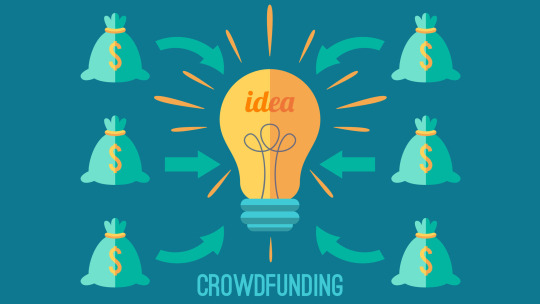
References
Pratt, M. K., & Gonsalves, C. (2023, March 31). crowdsourcing. CIO. https://www.techtarget.com/searchcio/definition/crowdsourcing
Chan, T. F. (2018, June 1). Malaysia has so much debt it launched a crowdfunding campaign — and it raised $1.8 million in 24 hours. Business Insider. https://www.businessinsider.com/malaysia-started-a-crowdfunding-campaign-to-pay-off-debt-2018-6
Projek. (2023, September 3). HOME - PROJEK57. PROJEK57 - a MOVEMENT OF HOPE. https://www.projek57.com/
Zahari, A. (2016, January 23). Public sector crowdsourcing in Malaysia – Citizen engagement. Crowdsourcing Week. https://crowdsourcingweek.com/blog/public-sector-crowdsourcing-in-malaysia-citizen-engagement/
Crowdsourcing - PrepareCenter. (2023, February 4). PrepareCenter. https://preparecenter.org/topic/crowdsourcing/
Tavra, M., Racetin, I., & Peroš, J. (2021). The role of crowdsourcing and social media in crisis mapping: a case study of a wildfire reaching Croatian City of Split. Geoenvironmental Disasters, 8(1). https://doi.org/10.1186/s40677-021-00181-3
Crowdsourcing Toolkit for Emergency Management - Integrating Crowdsourcing. (n.d.). https://www.crowdsourceem.org/integrating-crowdsourcing
Crowdfunding arts projects. (2017, January 20). Crowdfunding Arts Projects | Wired Canvas. https://wiredcanvas.com/marketing-ideas-generator/crowdfunding-arts-projects
WomenArts. (n.d.). Introduction to crowdfunding - WomenArts. https://www.womenarts.org/skills/crowdfunding/
Crowdfunding for artists. (n.d.). Artquest. https://artquest.org.uk/how-to-articles/crowdfunding/
Berman, N. (n.d.). Best Crowdfunding Platforms for Artists. https://blog.fracturedatlas.org/best-crowdfunding-platforms-artists
3 notes
·
View notes
Text
Face Filters on Social Media Influencers
Face filters are a feature that allows you to project 2D/3D elements into a real environment through augmented reality (AR). According to Herrington (2019), face filters work by detecting an image of a face and superimposing virtual elements onto that face via AR. A new portrait is created immediately after the complete process. The AR experience is triggered by the subject's head movements or altered facial expressions. These filters give users a lighthearted method to express themselves, interact with their followers, and bring levity to their Instagram Stories and posts (Herrington, 2019). Face filters contribute to the platform's dynamic and interactive aspect by allowing users to instantaneously change how they look. The first to use this face filter were social media sites like Instagram, Tiktok, and Snapchat.

Face filters have completely changed how influencers interact with their audience and publish video on Instagram, TikTok, and Snapchat. Most female influencers and teen girls claim to give model-esque looks by sharpening, reducing, improving, and recoloring their bodies and faces with filters that "beautify" their appearance (Ryan-Mosley, 2021). They can alter their personal appearance and even sort through many identities with new ease and flexibility thanks to the variety of facial filters. Face filters, however, significantly affect influencers. According to Rivas (2022), Influencers who spend a lot of time using filters on social media will feel more worried, less confident, and physically less beautiful than those who didn't. Social media filters are directly related to decreased self-esteem, lower levels of confidence, and more incidences of body dysmorphia. Influencers who suffer from body dysmorphia (BDD) believe there is something wrong with their bodies. It becomes fixation, an obsessive worry that often leads to anxiety, social isolation and seeking out cosmetic surgery (Haines, 2021). They anticipate considering getting plastic surgery to create a filtered look-alike version of themselves on social media (Rivas, 2022). Female influencers make particular requests for surgery (rhinoplasty, blepharoplasty, chin augmentation, submental liposuction or facelift surgery) based on the filters they apply (Haines, 2021).
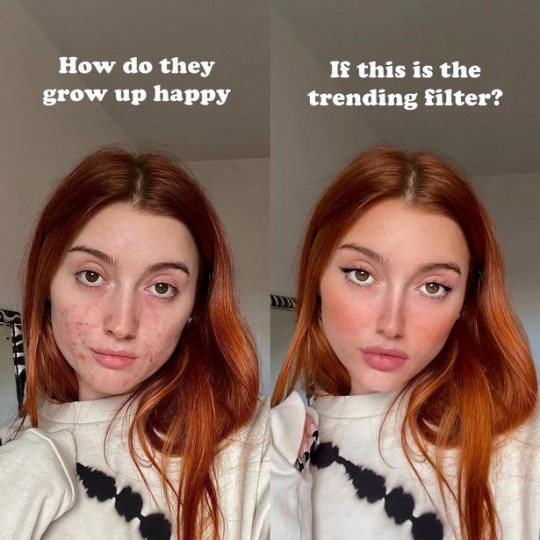
References:
Herrington J 2019, 'Face Filters for Instagram and Snapchat Are the New Frontier of Surrealist Art', The Medium, viewed 16 June 2023 <https://onezero.medium.com/the-power-of-face-filters-as-augmented-reality-art-for-the-masses-65a95fb4a577>
Ryan-Mosley T 2021, 'Beauty filters are changing the way young girls see themselves', MIT Technology Review, viewed 16 June 2023 <https://www.technologyreview.com/2021/04/02/1021635/beauty-filters-young-girls-augmented-reality-social-media/>
Rivas G 2022, 'The Mental Health Impacts of Beauty Filters on Social Media Shouldn't Be Ignored — Here's Why', InStyle, viewed 16 June 2023 <https://www.instyle.com/beauty/social-media-filters-mental-health>
Haines A 2021, 'From ‘Instagram Face’ To ‘Snapchat Dysmorphia’: How Beauty Filters Are Changing The Way We See Ourselves', Forbes, viewed 16 June 2023 <https://www.forbes.com/sites/annahaines/2021/04/27/from-instagram-face-to-snapchat-dysmorphia-how-beauty-filters-are-changing-the-way-we-see-ourselves/?sh=7454f8464eff>
2 notes
·
View notes
Text
Omegalul-ing through the pain: Online harassment and cyberbullying against women in the gaming community
As a girl in the gaming community, I have been extremely lucky in terms of interacting with strangers online. I have made many online friends through games and Discord and even developed connections more intimate than people I know in real life (iykyk). However, the same cannot be said for women and many others that belong in the minority groups that use the internet. As gaming is a traditionally and stereotypically white male-dominated activity, minorities can easily become the target of unwanted attention due to factors such as stereotypes, racism, homophobia, transphobia and misogyny. In the gaming industry, 20% of female players have encountered sexual harassment in the form of objectifying remarks, death threats, or rape threats from male or other players (Bougacha 2022). In reality, according to a poll done in the US, Germany, and China, 59% of women conceal their gender to avoid sexism and violence (Bougacha 2022). Harassment online comes in many forms such as slurs, death threats, doxxing or the act of disclosing personally identifiable information about someone online without their consent, including their true name, address, phone number, and financial and other details (Kaspersky 2023).
Online harassment in the gaming community is not just experienced in-game but it can occur in any other online spaces that allow open interaction between players and users. Community platforms such as Discord, Twitch and YouTube are spaces that gamers and non-gamers visit often thus making it easier to become a victim of virtual harassment and cyberbullying. In even more extreme cases, these online harassment can move offline too. Amouranth, a popular Twitch streamer and OnlyFans model, has had many online and offline stalker encounters. In 2022, a guy from Estonia was detained when he attempted to enter Amouranth's house (Gwilliam 2023). This happened after he apparently sold all of his possessions in a last-ditch effort to meet the model and start a relationship with her (Gwilliam 2023). Amouranth mentioned that she was scared for her life as this man had been routinely walking around her neighbourhood while hosting a Twitch stream called “Find Amouranth and Make Her Mine” (Moore 2022).
Amouranth’s case is only one among a countless number of women that risk their lives everyday despite not doing anything wrong. Women are not safe from harassment no matter online or offline. While gaming communities and platforms should do more to protect vulnerable groups like women, they cannot be blamed 100% because if people want to hurt minority groups, they will bypass any moderation and censors to get to the individual. While platforms should aim to provide better protection for everyone, especially women and resistless groups, we should all learn to follow cyber etiquette to ensure a safe online experience for all.
References
Bougacha, S 2022, Gaming: Hidden Sexism and Harassment, IVolunteer International, viewed 12 June 2023, <https://www.ivint.org/gaming-hidden-sexism-and-harassment/>.
Gwilliam, M 2023, Amouranth says stalker tried breaking into her house again and left mysterious package, Dexerto, viewed 12 June 2023, <https://www.dexerto.com/entertainment/amouranth-says-stalker-tried-breaking-into-her-house-again-and-left-mysterious-package-2076350/>.
Kaspersky 2023, What is Doxing – Definition and Explanation, Kaspersky, viewed 12 June 2023, <https://www.kaspersky.com/resource-center/definitions/what-is-doxing>.
Moore, E 2022, Amouranth Stalker Arrested After Travelling From Europe For Alleged Break-In Attempt, Gaming Bible, viewed 12 June 2023, <https://www.gamingbible.com/news/amouranth-stalker-arrested-following-alleged-breakin-attempt-20220616>.
#mda20009#digital communities#digitalcommunities#week8#week 8#social media governance#cyberbullying#online harassment#amouranth#twitch#discord#youtube#reddit#doxxing
3 notes
·
View notes
Text
Can social media be considered a public sphere?
What is the public sphere? The "public sphere" is typically seen as the social setting where various viewpoints are voiced, issues of public concern are addressed, and communication solutions are found (Wessler & Freudenthaler 2018). German philosopher Jürgen Habermas initially introduced the idea of the public sphere in the 1960s. Habermas contends that the public sphere is essential to democratic societies because it gives people a forum to express their ideas, form opinions, and hold those in positions of authority responsible. However, does social media considered a public sphere?

Information and communication technologies (ICTs) are eliminating all the temporal and spatial obstacles to distant contact, whereas formerly the public space was located in physical venues like cafés (Khan, Gilani, & Nawaz, 2012). Therefore, social media platforms such as Twitter, Facebook, and Instagram allow people to share information, express opinions and have conversations with a global audience. Therefore, there are some requirements to discuss whether social media is a public sphere. A public sphere must be free exchanges of ideas, free speech, and free debate (CommGAP, n.d). An equal and protected involvement must be allowed, access to knowledge must be unfettered and limitless, and institutional surveillance must not exist.
So, could everyone in the world have access to knowledge limitlessly on the internet? People from underdeveloped countries, they are lack affordable access to the Internet. As a result, they may receive inaccurate or incomplete information. This can be defined that there is no guarantee that everyone can access the same knowledge from social media. Hence, this is one of the proofs that social media might not consider a public sphere. Besides that, the content that people are looking at on social media is mostly controlled by algorithms. Social media algorithms are a means to order posts in a user's feed based on relevance rather than when they were published (Barnhart 2021). Therefore, it can be considered institutional surveillance, where the algorithms only show the content that the user might like to see, which caused that every user might receive different information. Not only that, although there is freedom of speech for everyone, there is still some unequal situation happening on social media. Celebrities, micro-celebrity, or people who have many followers on social media called it influencer, tend to get more blindly supports from their followers whenever they give out their opinion towards some issues. These can be proof that social media did not meet the requirement of the public sphere.

In conclusion, social media cannot be considered the public sphere due to the reason that social media did not meet the 3 requirements which are access to information limitlessly, equal involvement, and institutional monitoring should not exist.
References:
Barnhart, B 2021, ‘Everything you need to know about social media’, Sprout Blog, viewed 11 May 2023, <https://sproutsocial.com/insights/social-media-algorithms/>.
CommGAP, n.d, The public sphere, CommGAP, viewed 11 May 2023, <https://assets.publishing.service.gov.uk/media/57a08b45e5274a27b2000a69/PubSphereweb.pdf>.
Khan, M, Z, Gilani, I, S, & Nawaz, A 2012, ‘From Habermas Model to New Public Sphere: A Paradigm Shift’, Global Journal of Human Social Science.
Wessler, H, Freudenthaler, R 2018, Public sphere, Oxford Bibliographies, viewed 11 May 2023, <https://www.oxfordbibliographies.com/display/document/obo-9780199756841/obo-9780199756841-0030.xml>.
2 notes
·
View notes
Text
China: Their own bubble.
How does Internet Censorship work in China and What is Social Credit System that is being implemented in the country?
Can you imagine if we are not able to access our global social media platforms such as Facebook, Instagram, and Twitter?

These social media platforms have allowed us to express our thoughts and views and spread information, whether right or wrong, without the need for approval from authorities and being controlled by the government.
However, in China, it is the norm.

According to statistics, China has the highest number of internet users in the world compared to other countries, with a total of 1.5 billion users, thrice the number of users in the United States, which are only around 100 million users (Thomala, 2022).
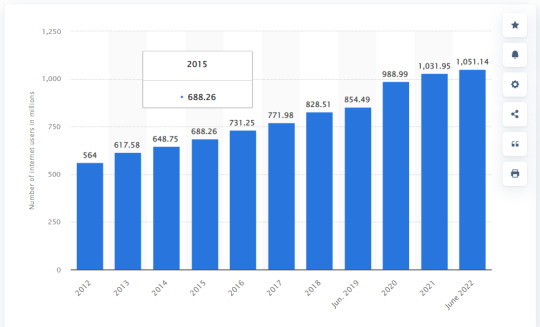
source: (Thomala, 2022) https://www.statista.com/statistics/265140/number-of-internet-users-in-china/
Even though they have access to the internet, their government has restricted (blocked) them from accessing Instagram, Google, YouTube, or even WhatsApp due to Internet censorship.
The censorship is to combat potentially disruptive consequences of Western cultural globalization (Miller, 2020). In the case of VPNs, only the ones approved by the government can be used, and the ones that are not approved are banned. However, VPN access will expose our data, making it more unsecure for everyone to use (How to use a VPN for China? is it legal? 2022).
In that case, China has its own social media developed to replace the platforms we use. For instance, WhatsApp is replaced with 'WeChat' and 'Baidu' similar to Google. These platforms are approved by the Chinese Government and are strictly monitored by the officials (DeGennaro & DeGennaro, 2020).
The Great Firewall of China, also known as "China's Golden Shield," is a system of internet censorship. It was first initiated in 1998 and began to operate in 2008 (Chandel et al., 2019).

Image Source: https://www.china-briefing.com/news/chinas-great-firewall-implications-businesses/
This censorship started to get stricter when hundreds of people were killed in the Tiananmen Square massacre in 1989, when students fought for free speech and a free press in China. The information on the massacre is not available on the Chinese Internet because the Chinese Government is seeking to conceal it because they want people to avoid remembering their wrongdoings (Gilbert, 2019).
Basically this censorship made the people in China to not being able to spread their words freely without having to go through surveillance and filtration by the governemnt. Thus making it difficult to raise awareness in what is happening in their country to the people outside of China. As the title of this blog says "their own bubble". They are only able to share and receive opinion from their own people.
It is not easy to pass the firewall, although many attempts has been done.
Oh, K-pop is banned in China too! Most of us will not survive in that country-

Social Credit System
Figure below shows an example of 'Social Credit System' using AI.
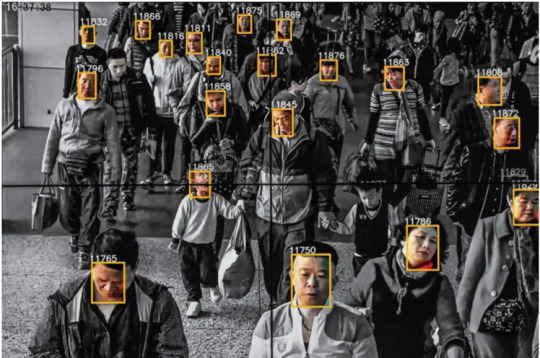
Source: (Campbell, 2019) on https://time.com/collection/davos-2019/5502592/china-social-credit-score
Well, it gets more complicated here.
China has a social credit system being implemented. According to Liang (2018), China's intention of implementing the social credit system is to "compute a credit score for every individual and organizational actor based on previous and continuing social and economic activity, and these credit ratings will govern whether an actor can get advantages of sanctions." Big Data and Artificial Intelligence is used widely in the process.
The credit scores are divided into two, good and bad. The examples of good actions are donating blood and involving in charities, while bad actions are stealing and cheating. Obtaining good social credit points will be given tax breaks or even cheaper public transportation fares, while the bad social credit points will be penalized and restricted from traveling (Velocityglobal, 2022).
According to Liang (2018), "the data collected are used and organized by the government to monitor and administer China's political, social, and commercial dominions." Behaviors are monitored to remain "trustworthy" through positive actions with this implementation of social credit.
Figure above shows how the social credit system works in China.
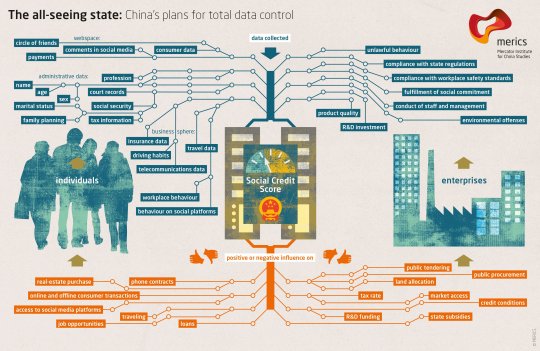
Image Source: https://twitter.com/merics_eu/status/898220464090341377
What about privacy?

It is something that invades someone's privacy. The Government has every data of ours organized. Alongside, we are under surveillance for EACH and every hour of the day. With one wrongdoing from an individual in the society, the person will probably go through some hardship to clear out that bad social credit(s).
The question is, will we survive such a controlled movement being implemented on us in Malaysia?
Probably not. Malaysians are highly vocal and our movements are compelling. Therefore, this topic is eye-opening, and we should be grateful that we are privileged enough to have freedom and peace. Although China's movements seems culture shock on our side, they're probably used to it by now as they cannot really voice out openly even if they are suffering.

References
Chandel, S., Jingji, Z., Yunnan, Y., Jingyao, S. and Zhipeng, Z., 2019, October. The golden shield project of china: A decade later—an in-depth study of the great firewall. In 2019 International Conference on Cyber-Enabled Distributed Computing and Knowledge Discovery (CyberC) (pp. 111-119). IEEE.
DeGennaro, T. and DeGennaro, T. (2020) The 10 most popular social media sites in China (2019), Dragon Social. Available at: https://www.dragonsocial.net/blog/social-media-in-china/ (Accessed: December 1, 2022).
Gilbert, D. (2019) How China is wiping memories of Tiananmen Square off the internet, VICE. Available at: https://www.vice.com/en/article/7xge3b/chinese-dissidents-are-running-out-of-ways-to-remember-tiananmen-square (Accessed: December 1, 2022).
How to use a VPN for China? is it legal? (2022) NordVPN. Available at: https://nordvpn.com/blog/vpn-for-china/#:~:text=Officially%2C%20the%20Chinese%20government%20has,and%20corporations%20rather%20than%20individuals. (Accessed: December 1, 2022).
Miller, J.S., 2020. China‘s Censorship and Cultural Power--Necessarily at Odds?.
Thomala, L.L. (2022) Internet users by country 2022, Statista. Available at: https://www.statista.com/statistics/262966/number-of-internet-users-in-selected-countries/ (Accessed: December 1, 2022).
Velocityglobal (2022) The Chinese Social Credit System: What to know as a business owner, Velocity Global. Available at: https://velocityglobal.com/blog/chinese-social-credit-system/ (Accessed: December 1, 2022).
#week11#casestudyonchina#digitalcommunities#mda20009#week 11#topicoftheweek#Global social media: China
6 notes
·
View notes
Text
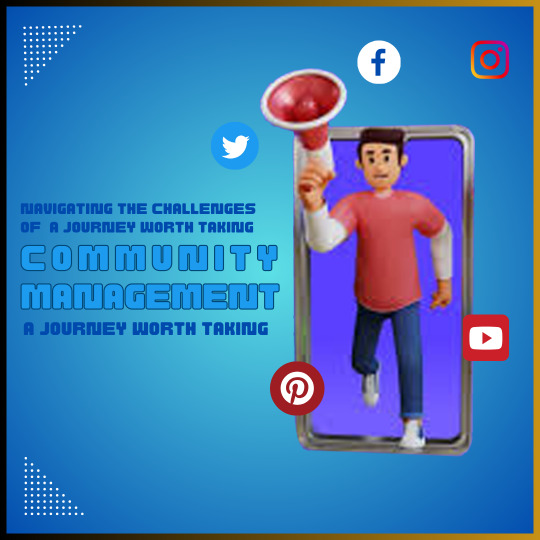

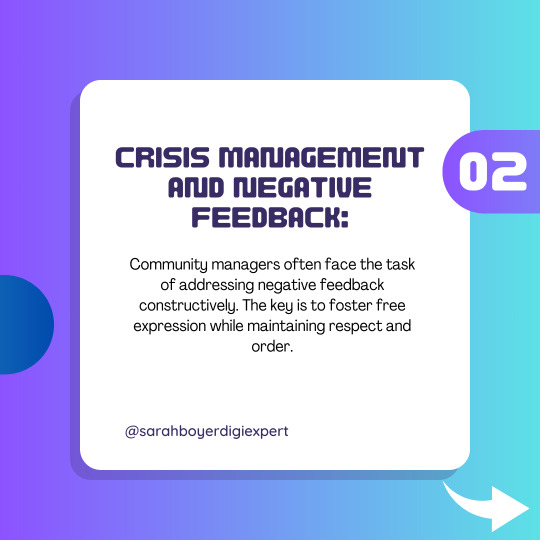
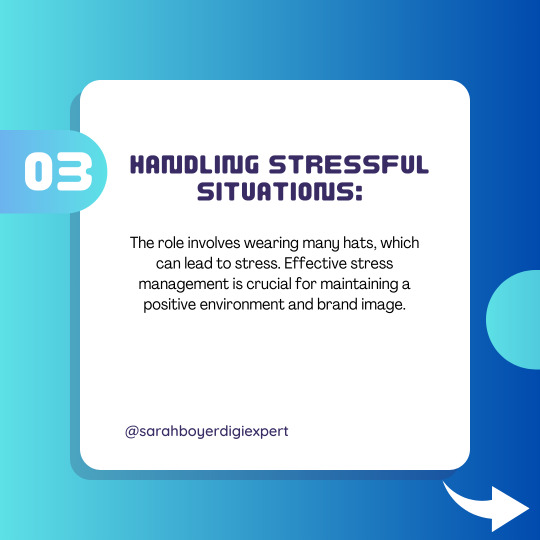
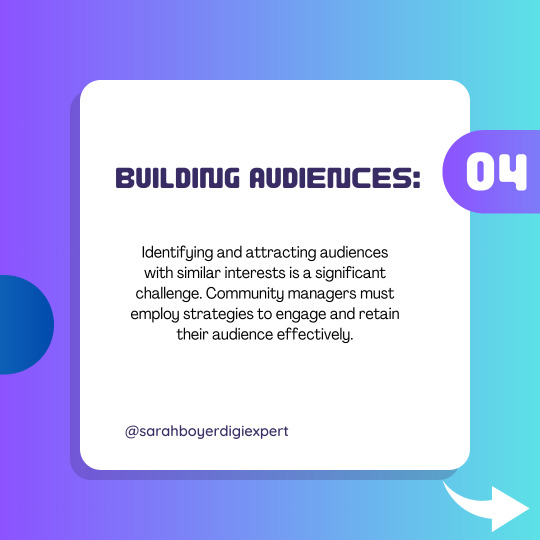



Delve into the intricacies of Community Management, a field that blends the art of communication, crisis handling, and empathy. As we peel back the layers, we uncover the diverse challenges faced by community managers every day. From managing varied personalities and opinions to handling feedback and stress, this role is pivotal in shaping brand image and customer experience. Let's explore how these professionals navigate the complexities of their roles, creating spaces where every voice is heard and valued.
✅ Diverse Personalities and Opinions
✅ Crisis Management and Negative Feedback
✅ Handling Stressful Situations
✅ Building Audiences
✅ Onboarding Newcomers
✅ Building Relationships with Users
-> https://tinyurl.com/39zb73hr
#CommunityManagement#SocialMediaStrategy#BrandEngagement#CustomerRelations#DigitalCommunities#ManagementChallenges
0 notes
Text
What is Fandom, advantages, and disadvantages of fandom?
To begin with this blog, let me explain what Fandom to those is who does not know what it is. Fandom is term that is used for physical or digital communities that share similar activities and interests (Luísa Pinto Felício 2023, pp. 17 pages). In laymen term, it is a community where individuals with similar interest towards a topic, activity, someone, or something gather and interact with one another. Examples of fandoms are the Taylor Swift fandom, for people who interested in Taylor Swift and her music, the gaming fandom, where people who are interested in games or also known as gamers, would interact about game related topics and also the Football fandom, talking about football related topics. To further explain about Fandom, let us dive deeper to what people of a Fandom do. Peoples of a fandom usually do fanarts, which are art made by fans of that fandom, they also do discussion boards online to discuss topics related to the fandom they are in. This are mostly seen on social media platforms such as X (Twitter), YouTube, Instagram and many other social media platforms. Another activity done by these fans of a fandom are attending fan conventions (Geraskier 2020), an example can be seen by the ACG community, which stands for Anime, Comic, Gaming community, where they attend fan conventions, meet peoples with similar interests, meeting celebrity guess such as famous voice actors for characters in ACG community, and even going as far to cosplay, which means dressing up, as their favourite characters from specific parts of the ACG. Within the era of internet and technology, fandom has grown even bigger because the people of the fandom are able to interact with each other online, no matter where they are in the world.
Advantages of fandom
With being in a fandom, you are able to gain a few advantages being in a fandom and here are some examples. Supporting the franchise or brand of the fandom, by buying products, fandoms supporting brands would be fans supporting and buying Nike Products more due to the vast amount of celebrity athletes using the brands hence causing the athletes fandom to buy more of the products that their person of interest uses. An example of a celebrity Athlete that uses Nike and has a huge fandom is LeBron James, the King of Basketball. Fandoms would promote their interest on social media, such as their favourite songs, artist, games, athletes, and teams, because they have interest in those topics and would love to bring in more people to support them (Nate 2020). This is because fans of fandom just love promoting and supporting their favourite team or artist and sharing about them on social media. In layman’s terms, the community would need time and energy to support their interest while fandom does it voluntarily (Nate 2020).
Disadvantages of fandom
In the vast landscape of fan communities, where people of the fandom show their love, dedication and also pride towards their interest, but there is also a darker side to fandoms, which are called “toxic fandom”. Toxic fandoms are fans of a community that can be seen as hostile and extreme where these group of people would band together towards something on social media such as Reddit, Facebook or Youtube (Zubernis 2022). Toxic fandoms is a word used by the media, to express fans who use negative and unacceptable behaviour which can range from bullying other members of the fandom or saying racist or sexist comments to people (Vinney 2022). An example of these “toxic fandom”, can be seen by the Marvel fandom, where they would “review bombing” which is known as leaving bad reviews on shows to ruin the reputation of films or shows, such as Ms. Marvel, where the fans dislike the show. Fandoms can band together to share a passion for something, they can also band together over mutual hate, which can often result in attacks against other fans (Zubernis 2022). The fandom can also become posting critical comments on reboots for works of pop culture, abusing other fans who have a different opinion, or sending threats to the production such as rape or murder threats or sharing the production team private information (Taylor 2023).
Conclusion:
In conclusion, being in a fandom can be a good way to interact with people who have similar interest to you, but there is also a bad side to fandoms. As a person who is a part of a fandom, I usually use it to connect with more people and gain more friend online while staying away from the negativity of some fandoms and not turning into a “toxic fandom” myself.
Referencing:
Pinto Felício, L 2023, Handbook of Research on Perspectives on Society and Technology Addiction, R Sine Nazlı & G Sari (eds), IGI Global, pp. 17 pages.
Geraskier 2020, What is Fandom?, Medium, viewed 9 November 2023, <https://medium.com/@geraskier/fandom-1607c5757841>.
Guggia, N 2020, Fans vs. Communities, www.linkedin.com, viewed 10 November 2023, <https://www.linkedin.com/pulse/fans-vs-communities-nate-guggia>.
Zubernis, L 2022, How Fandom Turns Toxic | Psychology Today, www.psychologytoday.com, viewed 12 November 2023, <https://www.psychologytoday.com/us/blog/the-science-fandom/202207/how-fandom-turns-toxic>.
Taylor, V 2023, Toxic Fandom: What Is It?, Change Becomes You, viewed 13 November 2023, <https://medium.com/change-becomes-you/toxic-fandom-what-is-it-c8c1520beb06>.
Vinney, C 2022, What Is Toxic Fandom?, Verywell Mind, viewed 13 November 2023, <https://www.verywellmind.com/what-is-toxic-fandom-5214499#:~:text=Toxic%20fandom%20is%20a%20buzzword>.
0 notes
Text
Fandom

WHAT IS FANDOM?
The word fandom can be found first used all the way back to 1903. The word can be easily described as all the fans whether it be fans of a certain sports team or fans of a famous celebrity (Merriam-Webster 2023. A fandom can also be described as a social network that has particular practices that fans usually put all their time and energy into if it is according to their object of interest (Geraskier 2020). Fans of a fandom usually share a common interest in a particular topic or things of interest. A fandom can also be defined as a subculture in which fans gather together in a sense of empathy and camaraderie.
The speed of growth of a fandom varies based on the interests of humans or the activities of an individual. The interest of a fan can vary from either a narrow type of view or a wider type of view. A narrow-interest fan usually focuses on something like famous celebrities such as Taylor Swift or Justin Bieber while a wider-interest fan can be defined as a fan that focuses on entire music genres, hobbies, games, or even fashions (Gerakier 2020).
A good example of a fandom is BTS 'ARMY’. This fandom is very well known globally as the global legion of fans for the Korean boy group BTS. This fandom not only focuses on the catchy upbeat songs of BTS but also focuses on driving social changes (Morrison 2021). In 2020, the BTS fandom set up and made many powerful campaigns that allowed them to raise millions of dollars. One of their more famous campaigns was the sabotaging of the then-president of The United States, Donald Trump election campaign through buying tickets to the event and not attending the event itself (Hollingsworth 2020)
PARTICIPATORY CULTURE
In this modern-day era, technology has been making advancements very quickly. A participatory culture can be defined as a culture in which individuals are also producers and not only consumers (Jenkins 2009). Social media is currently playing a very big role especially when it comes to allowing fans to be able to share a social connection with other individuals that share the same interest. Fans are given the opportunity to share their ideas with other fans and connect with them using social media as a medium. This has opened many new exciting methods of communicating for fans to interact with each other share their content and receive comments about their content through social media (Willard 2015).
Fandom is now not just a group of people that has the same interest but also an individual who gets themselves involved whether it be physically or online means. Fans are able to share their reproduced media to the public on social media to other fans whether it be remix tapes or a cover song of their favorite artist or song. A commonly known fandom that practices participatory culture is Taylor Swift’s fandom. Taylor Swift’s fandom group is called The Swifties (PopBuzz 2023). The ‘Swifties’ do not only share and make cover songs of the artist but also right blogs or even create memes with Taylor’s face.
TOXIC FANDOM
Usually, a healthy fandom emphasizes showing respect and inclusivity in which the creators of the content of interest to the fans and the fandom itself are being respectful towards each other. Even in terms of disagreements, a healthy fandom would remain respectful towards each other but a toxic fandom is the total opposite (Moore 2023). A fan who lacks respect towards other fans and acts violently towards others who have different opinions. Toxic fans are more normally found online on social media, especially on Twitter, more commonly known now as X (Taylor 2023).
An example of a toxic fandom would be the Star Wars fandom. The fandom has resorted to bullying and racism towards the actors of the movie. One of the best examples of actors/actresses being harassed would be Moses Ingram (Buckley 2022). She has posted on her social media how Toxic the Star Wars fandom is by showing how the fandom has been calling her racial slurs and sending hateful comments to her whether it be through DMs or Comments (Richards 2019).

CONCLUSION
As a conclusion, a fandom is defined as all the fans towards a specific content or person of interest. A fandom can also be described as a social network in which fans are able to use social media due to technological advancements to communicate and share their work with others with ease whether it be sharing a cover of their favorite song from a specific artist or even tape remixes. Fans also practice participatory culture in which they directly involve themselves with their content or person of interest whether it be physically or through online means. Fandoms are not only healthy but sometimes can tend to be toxic which might result in bullying, racism, and disrespecting each other's opinions through aggression.
References
Buckley, MG 2022, ‘Why star wars fans think they can bully the franchise’s actors’, Let’s Overthink That, viewed 14 November, 2023, <https://letsoverthinkthat.com/2022/06/19/star-wars-fans-bully-franchise-actors/>.
Chin, B 2023, ‘Week 9 Fandom and fan communities’, MDA 20009, lecture, Swinburne University Of Technology Sarawak, Kuching.
DHCobserver 2023, ‘About DHCobserver’, DHCobserver, viewed 7 November, 2023a, <https://digitalhealthcommunities.org/about>.
Geraskier 2020, ‘What is fandom?’, Medium, Medium, viewed 2 November, 2023, <https://medium.com/@geraskier/fandom-1607c5757841>.
Hollingsworth, J 2020, ‘K-pop fans are being credited with helping disrupt Trump’s rally. here’s why that shouldn’t be a surprise’, CNN, Cable News Network, viewed 14 November, 2023, <https://edition.cnn.com/2020/06/22/asia/k-pop-fandom-activism-intl-hnk/index.html>.
Kulowiec, G 2020, ‘I’ve been thinking...it is time to revisit jenkins’ participatory culture’, Medium, Medium, viewed 15 November, 2023, <https://medium.com/@gkulowiec/ive-been-thinking-it-is-time-to-revisit-jenkins-participatory-culture-d375ebd34e94>.
Moore, B 2023, ‘Toxic fandoms: When passion turns to Poison’, Agents of Fandom, Agents of Fandom, viewed 14 November, 2023, <https://agentsoffandom.com/toxic-fandoms-when-passion-is-poison/>.
Rebels, G 2021, ‘The power of fandom: What social media marketers can learn from teenage fans’, Medium, Medium, viewed 14 November, 2023, <https://medium.com/@goodrebels/the-power-of-fandom-what-social-media-marketers-can-learn-from-teenage-fans-63c0e184c8a7>.
Richards, D 2019, ‘Star wars: Rian Johnson talks toxic fandom and the last jedi’, CBR, viewed 14 November, 2023, <https://www.cbr.com/star-wars-last-jedi-rian-johnson-toxic-fandom/>.
Taylor, V 2023, ‘Toxic fandom: What is it?’, Medium, Change Becomes You, viewed 14 November, 2023, <https://medium.com/change-becomes-you/toxic-fandom-what-is-itc8c1520beb06#:~:text=In%20recent%20years%2C%20journalists%2C%20news,seen%20as%20inappropriate%20and%20unpleasant>.
Webster, M n.d., ‘Fandom definition & meaning’, Merriam-Webster, Merriam-Webster, viewed 15 November, 2023, <https://www.merriam-webster.com/dictionary/fandom#h1>.
Wilson-Taylor, J 2021, ‘What are Taylor Swift fans called?’, PopBuzz, viewed 15 November, 2023, <https://www.popbuzz.com/music/features/what-is-the-fandom-name-for/taylor-swift/>.
0 notes
Text
Week 8: Social Media Conflict
The usage of social media platforms is governed and managed by a set of laws, regulations, and procedures known as social media governance. It includes a variety of steps intended to uphold moral conduct, safeguard users' privacy and rights, reduce risks, and encourage responsible social media use. Effective social media management balances the requirements of users, corporations, and society at large while preserving a secure and welcoming online environment. The purpose of social media guidelines, also known as blogging policies or social network guidelines, is to describe and offer guidance on how social media communications should be handled by all members of an organization and how it can help all of them become communicators in participatory online environments (Bell, Turner, Wright, and Hinson 2009; 2010, Bell 2010).
While there are many advantages to social media sites, they also cause issues that require regulation. Social media sites gather a tonne of personal information about their users. Without effective control, there is a chance that this data will be misused or subjected to unauthorized access, resulting in privacy violations. Social media regulation ensures that privacy laws are followed and that security measures are taken to secure user data. Other than that, cyberbullying, harassment, and hate speech have increased on social media platforms, creating toxic environments for users. In addition to promoting online safety and offering tools for reporting and removing dangerous information, governance can enforce regulations to deal with these problems. For the stability of the nation's harmony in a multicultural nation like Malaysia, the government must keep a close eye on what is happening on new media platforms like the Internet. The widespread abuse of the Internet as a platform for the dissemination of unpleasant content and hate speech saddens us (Abdul Shukor et al. 2015). Therefore, community guidelines and regulations in all social media platforms are important to protect users’ safety.
In conclusion, consider that there is no one-size-fits-all strategy for social media administration because it is a complicated and constantly changing sector. There may be a range of governance structures across various platforms and governments. By upholding moral norms and encouraging responsible use of social media, the goal is to create a balance between user protection, societal well-being, and freedom of expression.
References
Bell, J. (2010), “Clearing the AIR”, Communication World, Vol. 27 No. 1, pp. 27-30
Turner, R. (2010), “The dawn of a new approach to security”, Computer Fraud & Security, Vol. 15, No. 4, pp. 15-17.
Wright, D.K. and Hinson, M. (2010), “An analysis of new communications media use in public relations: results of a five-year trend study”, Public Relations Journal, Vol. 4 No. 2, viewed 10 June 2023, www.prsa.org/Intelligence/PRJournal/Spring_10
Abdul Shukor, S, Abd Manap, N., & Rafei, M. 2015, ‘Spinning the web of hate online: A critical review from the Malaysian laws’, Asian Social Science, vol. 11, no. 28, pp. 183.
0 notes
Text
Week 10 - How Filters in Social media Impact Society: Digital Citizenship and Software Literacy
Perception of Beauty
Users may frequently change their look with filters on social networking sites by boosting their features, smoothing out their complexion, or adding effects. When people compare themselves to filtered photos, this can lead to false beauty standards, low self-esteem, and body dissatisfaction. It's crucial that users critique these idealised portrayals and advocate for body positivity and self-acceptance.
Authenticity and Self-Expression
The distinction between fact and fiction can get muddled by filters, making it challenging to tell what is unaltered and what has been manipulated. This raises issues with authenticity, dependability, and the requirement for openness, which may have an influence on digital citizenship. It's crucial for people to foster an online and offline digital culture that values truthfulness, decency, and self-expression.
Digital Citizenship & Software Literacy
The study of digital citizenship was created as a result of the increasing globalisation and ICT advancements (Saputra & Siddiq 2020). The introduction of digital citizenship is a result of citizens using digital technology in nearly all aspects of daily life. The practise of developing and strengthening citizens is becoming more and more crucial in the age of information disclosure brought on by the development of ICT (Saputra & Siddiq 2020). The fourth industrial revolution has disrupted people's lives, which has given rise to the idea of digital citizenship (Saputra & Siddiq 2020).
In order to provide the public with better resources and answers, researchers frequently raise questions about how to access digital media, how to adhere to copyright and other rules, and how to enhance security measures (Saputra & Siddiq 2020). In order to foster respect and cooperation, researchers have suggested developing the idea of "digital citizenship," arguing that "youth who are proactively respectful and supportive online" are not only less likely to harass others but also more likely to step in when it does (Jones & Mitchell, 2016, p. 12).
The second theory defines digital citizenship as "the ability to participate in society online." (Mossberger, 2009). Digital citizenship is a prerequisite for political engagement; the greater one's access to online resources and services, the more probable it is that they will gain from increasing engagement (Saputra & Siddiq 2020). Young people's political awareness, involvement with politics, and political participation rise as more of them "do politics online" (e.g., by discovering, assessing, and applying information, according to Mossberger et al., 2012).
The ability to generate, cooperate on, exchange, and criticise media utilising existing and upcoming technologies is a need for full involvement in society (Mason et al. 2018). Reading, writing, and participating in conversations that advance democratic discourse are all examples of practising digital citizenship.
The usage of filters emphasises the value of software literacy and digital literacy abilities. Individuals may improve their critical thinking abilities by being aware of how filters function, their possible impacts on visuals, and the reasons why they are used. Promoting software literacy supports responsible digital citizenship and gives people the power to decide for themselves how to utilise filters.
Mason, LE, Krutka, D & Stoddard, J 2018, ‘Media Literacy, democracy, and the challenge of fake news’, Journal of Media Literacy Education, vol. 10, no. 2, pp. 1–10.
Mossberger, K, Tolbert, CJ & Hamilton, A 2012, ‘Broadband adoption: Measuring Digital Citizenship: Mobile Access and Broadband’, International Journal of Communication, viewed 16 June, 2023, <https://ijoc.org/index.php/ijoc/article/view/1777>.
Saputra, M & Siddiq, IH 2020, ‘Social Media and digital citizenship: The urgency of digital literacy in the middle of a disrupted society era’, International Journal of Emerging Technologies in Learning (iJET), vol. 15, no. 07, p. 156.
0 notes
Text
WEEK 10: Digital citizenship and Conflict: Social media governance
Being a public sphere, social media networks are the spaces where the real world we are living in is reflected and at the same time, digitalise the social practices and processes for us - the digital citizens. Consequently, negative aspects like conflicts, harassment, or bullying can also happen online but result in both virtual and non-virtual effects. (Lenhart et al., 2016) Unfortunately, not all platforms are regulated with proper official policies to assign those behaviors with proportional punishments, along with the ability to be anonymous behind the screens that reinforce the users' audacity to exploit the freedom of speech.
Online harassment is not always identifiable. While well-known platforms like Facebook or Tiktok have community guidelines in place, the effectiveness of those policies can vary, leading to inconsistencies in addressing harmful behaviors. It seems like the more policies platform operators try to publish, the more tips and tricks the users will improvise to break the laws. Haslop et al. (2021) mentioned the problem in which online harassment has become so common that it starts to be considered normal in digitised forums. The worse thing is the users are adapting to the situation by developing a tolerant "wall" to naturally ignore - keep scrolling when they witness offensive content instead of showing personal disagreement. This reminds me of the comment section of the Instagram reels, where I observe waves of body shaming, gender discrimination and racism expressed in the form of sarcastic comments. Anyone who disagrees with the major would be said to be "dry", "lack of humor" or "not pass the vibe" and easily become the next target of the assaults.

Since it requires a lot of time ahead to fully govern the platforms' usage, prioritize the development and enforcement of clear, comprehensive policies that outline what is "acceptable", it is our responsibility to recognize our role in shaping the online landscape's culture and strive to contribute positively to the digital public sphere.
REFERENCES
Haslop, C., O’Rourke, F., & Southern, R. (2021). NoSnowflakes: The toleration of harassment and an emergent gender-related digital divide, in a UK student online culture. Convergence (London, England), 27(5), 1418–1438. https://doi.org/10.1177/1354856521989270
Lenhart, A., Michele, Y., Zickuhr, K., & Price Feeney, M. (2016). ONLINE HARASSMENT, DIGITAL ABUSE, AND CYBERSTALKING IN AMERICA. Data&Society Research Institute . https://www.datasociety.net/pubs/oh/Online_Harassment_2016.pdf
0 notes
Text
What is Social Gaming?
Social gaming refers to online video games that are widely played and available only through social media platforms (Bernachi, n.d.). These games are made to promote social interaction and conversation about the game both inside and outside of the game. They usually have multiplayer gaming mechanics and gamification systems.
Types of Games:
Card games
Board games
Mobile games
Social network games
Alternate reality games
LAN parties
Miniature wargaming
Live action role-playing games
Tabletop games
Massively multiplayer online games

Four Types of Play of Roger Caillois
French sociologist Roger Caillois developed four basic categories of play to characterize the roles in games and their intricacies:
Agon: This involves competition and is characterized by the presence of rules and the desire to win. It encompasses activities such as sports and board games
Alea: Games of chance fall under this category, where ability is not as important as luck in determining the result. Lottery games and gambling are two examples.
Mimicry: Role-playing, pretend play, and simulation are all part of this kind of play. People can take on several roles and identities, which encourages imagination and creativity.
Ilinx: Disorientation and vertigo are symptoms of ilinx. Activities that cause vertigo or changed perception, such spinning or some amusement park rides, fall under this category of play.
Caillois further divided these categories into two types of play:
Paida: This type of play is more spontaneous, exuberant, and unstructured. It corresponds to mimicry and ilinx and is associated with Mead's concept of pretend play.
Ludus: Ludus play is highly regulated and consists of structured, well-defined activities. It is translates to Mead's category of "games" and includes contests (agon) and games of chance (alea).

Are gaming communities becoming less about play and more about monetisation?
According to (Daniels, 2023), the conventional idea of play within these groups has been impacted by the growing tendency of commercialization in gaming communities. More and more gaming communities are concentrating on monetization techniques in order to leverage their user base and engagement. This shift is evident in various way:
Impact on consumer behavior
Sponsorships and advertising
Web3 and game monetization
Social gaming marketing
Diverse monetization models
youtube
Source: https://youtu.be/ARV5QCDb2UE
Has the Covid-19 pandemic changed the public perception of gaming?
It is true that the Covid-19 pandemic has had a variety of effects on how the general public views games. The consequences of the epidemic on gaming behavior and players' well-being have been clarified by research and studies. Here are some key findings:
Increased gaming activity
Research has shown that during the Covid-19 epidemic, young people's gaming engagement increased overall (Haug et al., 2022). Due to the epidemic and its accompanying constraints, people spent more time at home and played more video games for amusement and social connection.
Concerns and Public Health Initiatives
Concerns over young people's lack of physical activity, poor mental health, and sleep issues have been highlighted by the pandemic's increased gaming participation (Haug et al., 2022). It has been suggested that public health initiatives stress the promotion of physical exercise and create practical plans to stop harmful gaming habits.
Perceived benefits of gaming
Online gaming may enhance young people's psychosocial development in cognitive, motivational, emotional, and social domains, according to some research. Furthermore, it has been discovered that social gaming during social separation significantly but modestly lessens the experience of loneliness.
Negative perceptions
Negative themes have surfaced surrounding the belief that playing video games was a way to pass the time during the pandemic, notwithstanding any potential advantages (Barr & Copeland-Stewart, 2021).
In summary, the Covid-19 pandemic has caused a rise in youth gaming, and opinions on the effects of gaming on wellbeing are beginning to take shape, with both positive and negative views being expressed. Public health activities are necessary to address the challenges of physical inactivity and mental health disorders, even as other research emphasize the potential benefits of gaming.
youtube
Source: https://youtu.be/vL4W2zdWL9k


References
Bernachi, M. (n.d.). Social Gaming: What it is, benefits, and examples of platforms. https://www.cyberclick.net/numericalblogen/social-gaming-what-it-is-benefits-and-examples-of-platforms
Daniels, B. (2023, April 13). 10 tried & proven ways to monetize your gaming community in 2022. StriveCloud. https://strivecloud.io/blog/monetize-discord-communities/
Haug, E., Mæland, S., Lehmann, S., Bjørknes, R., Fadnes, L. T., Sandal, G. M., & Skogen, J. C. (2022). Increased gaming during COVID-19 Predicts physical inactivity among youth in Norway—A Two-Wave Longitudinal Cohort study. Frontiers in Public Health, 10. https://doi.org/10.3389/fpubh.2022.812932
Barr, M., & Copeland-Stewart, A. (2021). Playing video games during the COVID-19 pandemic and effects on Players’ Well-Being. Games and Culture, 17(1), 122–139. https://doi.org/10.1177/15554120211017036
2 notes
·
View notes
Text
Gaming community of Social and Live Streaming (Our Daily Lives in the Covid-19 pandemic)
Video games in the gaming community have become an everyday part of the lives of thousands of users. While playing video games is fairly widespread, live streaming services are getting more and more popular, giving consumers a far more social and engaging gaming experience. A growing trend in the gaming industry, especially social gaming, is live broadcasting. Live streaming and social gaming both entail participatory and community-driven experiences, yet they each have unique features. The social component of gaming, which emphasises cooperation, competitiveness, and player interaction, is the focus of social gaming. To join teams, communicate, and play multiplayer game modes, players connect with friends or complete strangers. On the other hand, live streaming has become a cultural phenomenon, with millions of people watching gaming content daily. It provides a way for gamers to showcase their skills, entertain others with their commentary and reactions, and build communities around their streams.

The COVID-19 pandemic in 2020 has affected almost every part of our life, with the associated lockdown limitations influencing how we work, socialise, shop, and discover (Barr & Copeland-Stewart, 2021). Unavoidably, such profound modifications to our daily routines have prompted inquiries about wellbeing and how we manage these peculiar and unexpected situations. As we gather to play video games on our gaming consoles, mobile devices, and personal computers, gaming has in some ways suddenly become a part of our life. To avoid solitude, we frequently interact and converse with our pals through online gaming. Playing video games during the COVID-19 pandemic has improved participants' perceptions of their well-being. Games have provided an enjoyable means of maintaining social contact, and a stress relieving and mentally stimulating escape from the effects of lockdown (Barr & Copeland-Stewart, 2021).

One game that motivates my well-being during the pandemic was ‘Among Us’. Among Us is an online multiplayer game and the popularity of this game has skyrocketed during the COVID-19 pandemic (Zhang, 2020). It revolves around teamwork, deception, and deduction, creating an engaging and suspenseful atmosphere. This game's emphasis on fabrication, on blame-shifting, and on reporting other people to the authorities is extremely on point (Stuart, 2020). Coronavirus has pushed us away from each other physically, and so multi-player games that allow us to hang out virtually work rather well. According to Sodhi (2020), Ludo King, Codenames, and Fall-Guys’ increasing popularity demonstrates how gaming is becoming into a tool for us to rediscover our humanity. Despite the fact that those can be amusing to play with strangers, Among Us is best enjoyed with a group of friends (Sodhi, 2020). Among Us was used to be my favourite game back at the pandemic time. My colleagues and I played that game whenever we were bored at night. This game is fantastic to illustrate to us how to play fairly because it takes place on a spacecraft where the crew members perform various chores to keep the ship operating. However, among them are one to three impostors who want to stealthily wreck the ship and kill the crew. This game was all the fun of a slightly drunken board game night to us, but virtual, which makes it perfect for the semi-lockdown situation a lot of us were back then (Stuart, 2020). We could never forget this game brightened us as a way of socialisation in the future.
References:
Barr M & Copeland-Stewart A 2021, 'Playing Video Games During the COVID-19 Pandemic and Effects on Players’ Well-Being', SageJournals, Vol. 17, no.1, pp. 122-139.
Zhang E 2020, '‘Among Us’ Gains Popularity During COVID-19 Pandemic', The Beachcomber, viewed 16 June 2023 <https://bcomber.org/arts-and-entertainment/2020/10/27/among-us-gains-popularity-during-covid-19-pandemic/>
Stuart K 2020, 'Among Us: the ultimate party game of the paranoid Covid era', The Guardian, viewed 16 June 2023 <https://www.theguardian.com/games/2020/sep/29/among-us-the-ultimate-party-game-of-the-covid-era>
Sodhi T 2020, 'How Among Us Found Success in Connecting People During a Pandemic', Gadgets360, viewed 16 June 2023 <https://www.gadgets360.com/games/features/among-us-innersloth-internet-game-multi-player-online-discord-twitch-youtube-pandemic-connections-2301149>
0 notes
Text
Fast fashion is out, Slow fashion is in!
The detrimental effects of the fast fashion business on the environment and society have come to public attention in recent years due to social media. Fast fashion is the activity of mass producing inexpensive, trend-driven apparel that encourages consumers to buy more in a short time span and soon discard it due to the garment going out of style or because of its poor condition after a few washes. As a result, there is now a culture of wasteful fashion consumption, which is terrible for the environment. One of the biggest fast fashion companies of our time, SHEIN, reported an eye-dropping revenue of USD 22.7 billion in just 2022 (KrAsia 2023). This can be due to the influence of microcelebrities and how quickly people jump on to new trends without thinking about where their products are coming from. As consumers are becoming more aware of the origins of their products, companies are also starting to implement more sustainable and eco-friendly fashion to their businesses. Some companies that are working towards a more sustainable fashion industry include Monki, H&M and Levi’s. I believe many people have already explained what slow and fast fashion is, so I will be sharing some ways to minimise waste and to make more sustainable fashion choices!
Recently, thrifting has also become a trend! Thrifting refers to the act and process of purchasing old products from secondhand shops (Okafor 2022). However, thrifting can be done online now such as through Carousell and Facebook Marketplace. According to ThredUp’s Annual Resale Report from the previous year, thrifting is developing into a global phenomenon and is anticipated to increase by 127% by 2026 (Quick 2023). Thrifting has become popular since users on social media have started regularly posting their thrifted gems online such as TikTok and Instagram.
To be able to thrift, we need people willing to sell, or even donate old clothes, which is also a sustainable way to participate in fashion. We may not notice this issue but there are a lot of people that do not have access to basic necessities such as clean clothes, running water and food, the things that most of us take for granted all the time. Donating clothes to the needy and those living in poverty is not only a meaningful and kind gesture to those that need your help but it’s also good for the environment! Your old clothes or pieces that you don’t wear anymore won’t end up in landfills but will be relayed to someone that needs it more than anything.
Don’t be afraid to play around with old clothes! After a certain period of time, we may find a piece of clothing boring or not suitable for our aesthetics or taste. To spice things up, we can experiment with tie dye, bleach, embroidery and more on old pieces. If you’re handy with sewing, you can even take apart old clothes and turn them into completely new creations such as tote bags, blankets, pillow covers and more! How cool would it be to have your very own blanket made out of a bunch of old clothes?
This is more on the obvious side but buying less clothes can directly help protect the planet and those suffering due to unfair labours. Oftentimes we get the feeling that we “don’t have anything to wear” or “don’t have enough clothes” but this is far from the truth. On average, clothing is typically worn for seven times until they’re disposed of (Nizzoli 2022). In 2022, the population is buying 60% more clothes compared to 2022 (Nizzoli 2022). This results in an 18.6 million tonnes of textile waste and clothing to be thrown away globally each year (Nizzoli 2022). Whether we subconsciously think that we do not have enough clothes or are peer pressured into fitting in or catching up with trends, this can severely affect the environment as we are contributing to a large amount of waste for absolutely no reason. Before you purchase anything, think about where this product comes from and whether you really need it. If you don’t, put it back, the planet and your wallet will thank you!
Last but not least, wash your clothes correctly! I cannot stress this enough, a good pair of jeans can last you a good five years but only if you wash it properly and take care of it. Clothes come with wash instructions on the back or on the tag and it is recommended that we follow the given instructions. The best way to keep your clothes in tip-top condition is through hand washing but obviously it’s hard to do that in the 21st century due to how busy our schedules are. Some tips to take note of are to wash them less frequently (but not until the point where they stink), avoid drying clothes in the dryer as it strips the colour of your clothes faster and to avoid using hot water when cleaning.
While I understand that some people have no choice but to choose fast fashion options, it is so important that we are mindful when choosing the clothes we buy and not take it for granted. Quality over quantity is the most important tip, choose clothes and accessories that are timeless or compliment each other so they can be worn for many years to come no matter the occasion.
References
KrAsia 2023, Shein’s Growth Threatened by Multiple Challenges, KrAsia, viewed 10 June 2023, https://kr-asia.com/sheins-growth-threatened-by-multiple-challenges.
Nizzoli, G 2022, How Many Times Do We Wear Our Clothes? (Not Enough!), Project Cece, viewed 11 June 2023, https://www.projectcece.com/blog/506/how-many-times-do-we-wear-our-clothes/.
Okafor, J 2022, What Does It Mean To Go Thrifting?, TRVST, viewed 10 June 2023, https://www.trvst.world/sustainable-living/fashion/what-does-it-mean-to-go-thrifting/.
Quick, C 2023, Here’s Why Thrifted Style Is One Of The Biggest Fashion Trends Right Now, Her Agenda, viewed 10 June 2023, https://heragenda.com/p/thrifting-becoming-popular-among-millennials-and-how-to-shop-second-hand/.
#mda20009#slow fashion#fast fashion#fashion#fashion tips#digitalcommunities#digital communities#week 7#thrifting#thrift
2 notes
·
View notes
Text
Week 10: Instagram Filters
In social media, we always want to present our best selves. The use of filters to make us look our best in selfies or other photos is no longer just for professional photographers. It is simple to add filters to photos to instantly increase contrast, brightness, and other photo attributes to improve the aesthetic appeal of the image. A study conducted in 2017 on 2 million Instagram accounts found that 25% of posts with the hashtag #selfie and 18% of all Instagram posts use filters (Youn 2019, p.1). How did the idea of Instagram filters begin? When Snapchat first launched, filters were the turning point for everything, and they completely changed the game. Instagram launched stories in 2016 and AR filters earlier in 2018, not wanting to miss out on this growing trend. This was a significant development in the field of augmented reality and filters in general because it now allows anyone to create original filters (Filterious n.d.)
Instagram filters will make us more attractive and give us more self-confidence by making us look our best. But over time, filters will harm our mental health. This is because spending too much time looking at filtered versions of ourselves can have an effect on our moods and sleep patterns. A reasonable amount of filtering is acceptable; however, if our online image deviates too far from our actual appearance, we become wary of meeting people in person, which increases our social anxiety and contributes to feelings of social isolation (Tara 2023).
The way we share and consume visual content has changed as a result of Instagram filters. It provides countless opportunities for individual expression and creative expression. Thus, understanding the psychology of filters will help us embrace the magic of Instagram filters and unleash our creativity when editing photos in the digital sphere.

References
Filterious n.d., Where did the ears and tongue come from? The history of Social Media filters, Filterious, viewed 16 June 2023, <https://filterious.com/short-history-of-social-media-filters/>.
Tara, W 2023, The Hidden Danger of Online Beauty Filters, Psychology Today, viewed 16 June 2023, <https://www.psychologytoday.com/intl/blog/the-clarity/202303/can-beauty-filters-damage-your-self-esteem#:~:text=If%20our%20online%20image%20deviates,to%20feelings%20of%20social%20isolation.
Youn, A 2019, ‘What Is the Ideal Instagram Filter?’, Aesthetic surgery journal. Open forum, vol. 1, no. 2, p.1.
0 notes